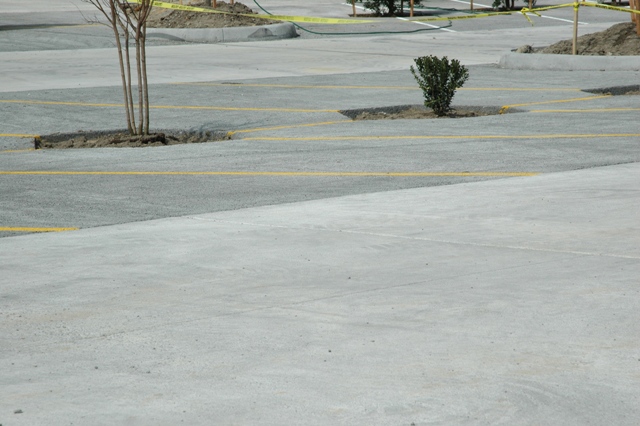Date: November 4, 2009
News - Classic Concrete Has Renewed Vibe
The ancient Romans forged one of the greatest structures across a continent over many centuries ago-- the viaduct that still stands today. The Romans created this classic structure from concrete. And, when Americans discovered the Model T and the freedom of travel, Route 66 was created to join the East Coast with the West in the 20th Century. This highway was built with concrete, the road construction gold standard, and has stood the test of time.
Then concrete took a step behind when the oil boom created the advent of asphalt, made from a petroleum byproduct. While concrete needs time to set as a road surface before vehicles can travel on it, asphalt became a cheaper and faster method to construct roads. Asphalt met needs of skyrocketing construction of roads and the explosion of vehicles using them.
Today, that basic component of asphalt—petroleum—has now become depleted and expensive, making its use for roads, parking, and other surfaces so commonly taken for granted more costly than ever to create or to continually maintain. Some cities, such as Charlotte, NC, had to halt road paving projects. In many regions the price tag of asphalt has quadrupled due to the climb in crude oil prices. Another factor that has affected the bottom line for asphalt is the increased efficiency of oil refining, which has reduced the amount of byproduct available to manufacture asphalt.
Yet concrete, still durable, stable, time-tested and worthy has become a renewed classic force—and one that is turning the heads of municipal planners, engineers and builders. Many in the civil engineering arena are rethinking the use of concrete, which has remained consistent in cost and has a longer lifespan, making road maintenance considerably more affordable to plan and budget. Another effective application is a process called “whitetopping,” where the concrete overlays an asphalt surface on a parking lot, a road or a driveway. Concrete roads are a more rigid pavement, which can increase gas mileage for vehicles. Overall, the strength, durability and cost advantages give concrete a competitive edge as personal, municipal, state and national budgets are burdened.
The Romans may have also been keenly aware of the environmental qualities of concrete—it carried the cities’ water supply to homes, temples and most importantly the Emperor’s palace. Even today concrete is environmentally sound. Using naturally-existing materials, or even recycled materials such as old concrete or fly ash, concrete creates no unfriendly runoff, unlike asphalt with its processed petroleum base.
As we have become more aware of the stresses of global warming to the world, concrete steps up as a viable material to help reduce that effect. Unlike asphalt, which creates a heat island effect and absorbs light, concrete by nature is reflective, limiting the surface heat created by sunlight and vehicles. Because of its light nature, concrete parking lots, sidewalks and roads require less overhead lighting, since the light’s spill is more effective. The energy saved is up to 30 percent.
A new vibe to classic concrete is Pervious Concrete. Chaney Enterprises has developed a signature mix, Drain-Crete. Like its classic cousin, Pervious Concrete is made with much the same materials but without sand, creating a dense, durable, yet porous surface that allows water to run through without the ponding created by impervious surfaces. This is a common challenge for engineers when designing storm water management ponds. Pervious Concrete is a viable environmental option for surfaces considered for critical water areas and low-lying regions. The city of Chicago even used Pervious Concrete in alleyways to alleviate the problem of standing water on some surfaces.
Chaney’s Drain Crete has been used around the Southern Maryland region for residential driveways to waterfront homes, a pathway for the Smithsonian Environmental Research Center in Edgewater, a parking lot in Lexington Park and as a portion of the golf cart path at Queenstown Harbor Golf Course on the Eastern Shore. Impressed with its innovative properties, engineers are taking note and governments are recognizing its value and use as planning ordinances are revisited to incorporate Pervious Concrete to planning and construction codes. Queen Anne’s County is installing 225 yards of Drain Crete at an historic site where the county is incorporating green rehabilitation and construction practices to protect the pristine grounds from runoff and pollution.
Like the saying, “Everything old is new again,” world-wise classic concrete is new and renewed, making a step forward into a brighter, sustainable, cost-effective and greener new world.

Pictured: An innovative use of traditional and pervious concrete at a Williamsburg, VA shopping center parking lot.